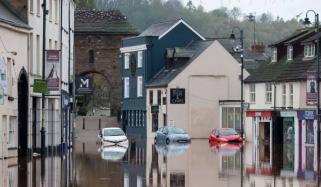
Sudden and intense bursts of extreme rainfall are causing devastation across mountainous parts of South Asia, triggering flash floods, deadly mudflows and huge landslides that have washed out entire neighbourhoods and turned vibrant communities into heaps of mud and rubble.
As reported by Reuters, massive, sudden downpours of rain known as cloudbursts have struck Pakistan and India during this monsoon season, killing hundreds of people in the flash floods and landslides they have triggered.
What are cloudbursts?
By a widely accepted definition, a cloudburst means more than 100 mm (4 inches) of rainfall in one hour, over a small area.
This year, the monsoon, which originates in the Bay of Bengal and then sweeps westwards across northern India to Pakistan every summer, has brought deadly cloudbursts.
Weather studies say cloudbursts typically occur in South Asia when warm, monsoon winds, laden with moisture, meet the cold mountain air in the north of India and Pakistan, causing condensation. With a warming planet, the monsoon has hotter air, which can carry more moisture.
India's weather department data shows cloudbursts are most common in the Himalayan regions of Indian Kashmir, Ladakh, Himachal Pradesh and Uttarakhand.
Can cludbursts be predicted?
Forecasting such events days in advance is nearly impossible, though radars can track the build-up of dense cloud formations and give short-term warnings of intense downpours.
To strengthen monitoring, the India Meteorological Department has installed new radars across the Himalayas and set up observatories aimed at improving early warnings and understanding of these extreme weather events.
Syed Muhammad Tayyab Shah, who leads risk assessment at Pakistan’s National Disaster Management Authority, part of the government, said that it was possible to warn about the general area but not possible to pinpoint the exact location in advance where a cloudburst will happen.












